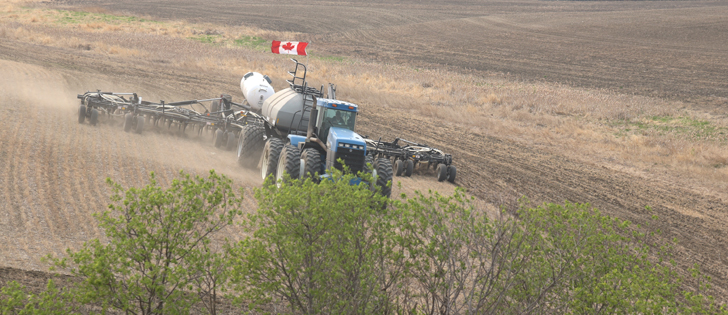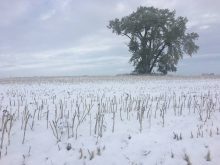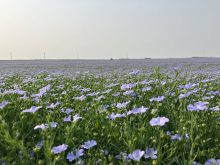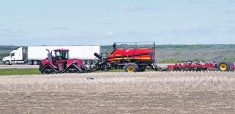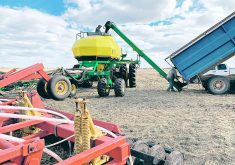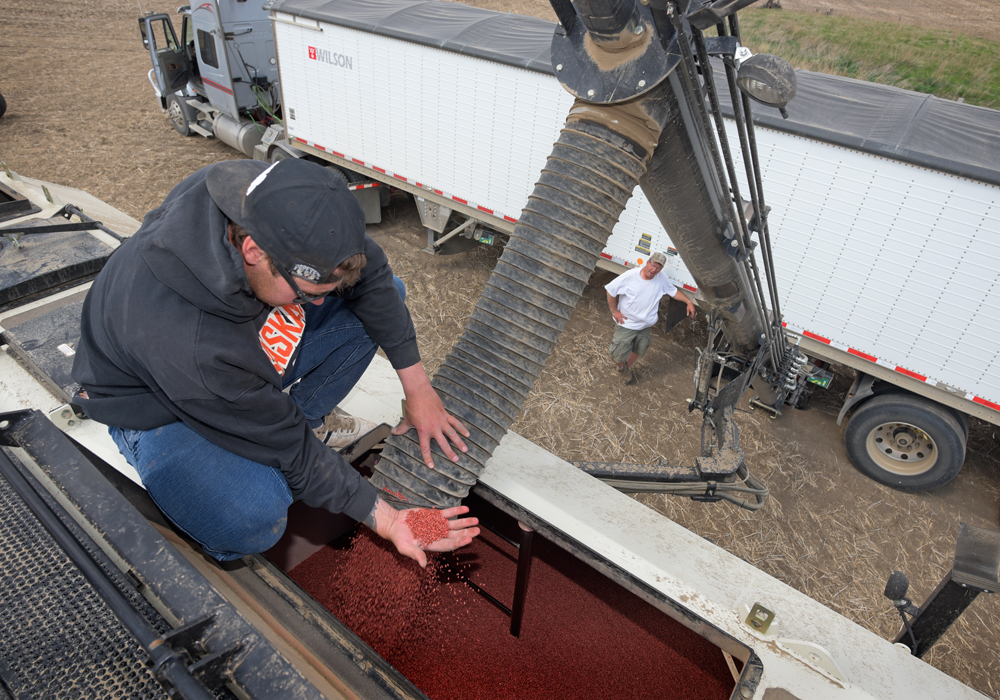Somewhere, somehow, farmers have found more than two million extra acres for the 2017 crop production season, according to Statistics Canada.
That will allow farmers to boost canola acres to a stunning 22.4 million, expand Manitoba soybean acres to 2.2 million, let oat acres jump 20.6 percent to 3.4 million — all while allowing them to keep all-wheat acres stable at 23.2 million.
It’s a puzzling situation for analysts because it doesn’t seem like a year when all crops will be big moneymakers.
CLICK HERE FOR A STORY ON PULSE ACREAGE
Read Also

Farming Smarter receives financial boost from Alberta government for potato research
Farming Smarter near Lethbridge got a boost to its research equipment, thanks to the Alberta government’s increase in funding for research associations.
“You can understand people pushing to the max on canola and soybeans … but I wouldn’t think the present price structure of grains and oilseeds (would be) encouraging the most marginal land to be brought back into production,” said Neil Townsend of FarmLink Marketing.
Brian Voth of IntelliFarm said he was also surprised by the high total acreage.
“Are they breaking up pastures? Are they going corner to corner. Are they seeding sloughs?” Voth wondered an hour after the Statistics Canada March estimate of principal field crops acreage was released April 21.
The surge in canola and soybean acres went well beyond most analysts’ expectations, but the likely cause was well-accepted before the report: canola and soybeans are most farmers’ most profitable crops.
Townsend said FarmLink’s internal numbers almost matched the 22.4 million acre StatsCan estimate, based on hearing numerous clients planning to favour the crops this spring. That is up almost 10 percent from last year and a new record high.
“They’re definitely responding to incentive,” said Townsend.
“Those are probably the two that pencil out the best.”
Spring wheat acres also surprised many analysts, both in Canada and abroad. Durum fell by one million acres, which was expected, but spring wheat acres rose 1.26 million acres. Spring wheat crops also had terrible disease problems last year, but while farmers fled from durum, there appears to be even more desire to grow spring wheat this year, especially in Alberta where acreage is expected to grow by about 800,000 acres.
Soybeans, as expected by most in the trade, will see substantially bigger acreage this summer, but many were surprised by the size of the increase. Manitoba’s acreage will swell to 2.2 million, which is a 34.6 percent increase from last year. Saskatchewan soybean acreage is expected to triple from 240,000 acres to 730,000.
Oat acres were expected to increase, but the almost 600,000 acre projected increase is much more than most trade expectations.
In Manitoba, corn acreage could reach 475,000 this year, StatsCan said.
However, Canadian barley acres should fall eight percent to 5.9 million.
Townsend said the big overall acreage number is a surprise, but cautioned that farmers still have crops in the field from 2016 and might not be able to push as hard when they get into their fields.
“They (were) operators feeling the most optimistic,” said Townsend about farmer attitudes in March when the survey was done.
Contact ed.white@producer.com




